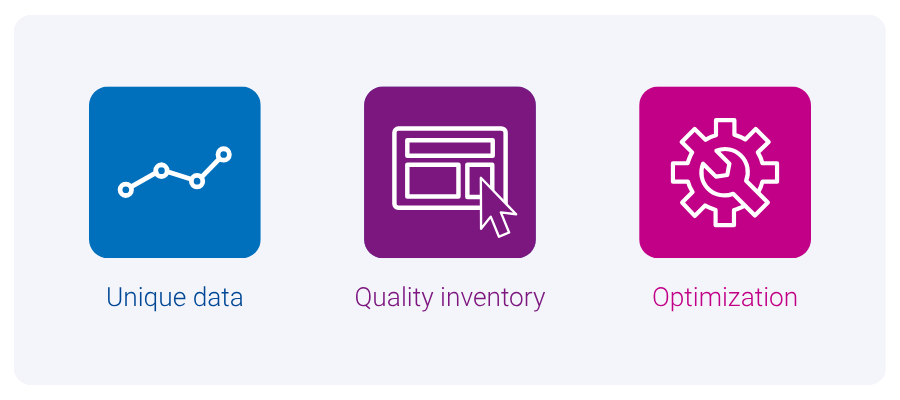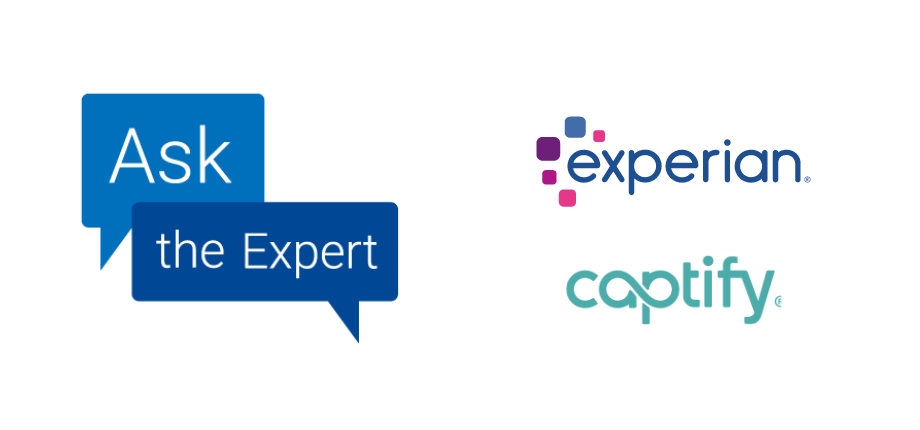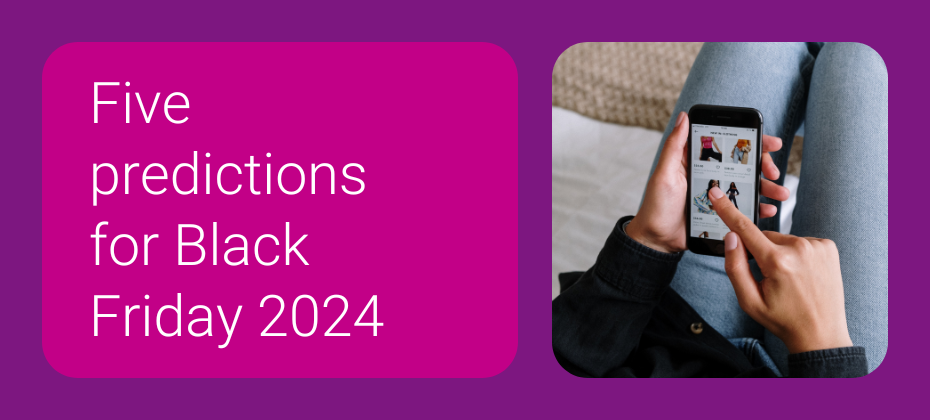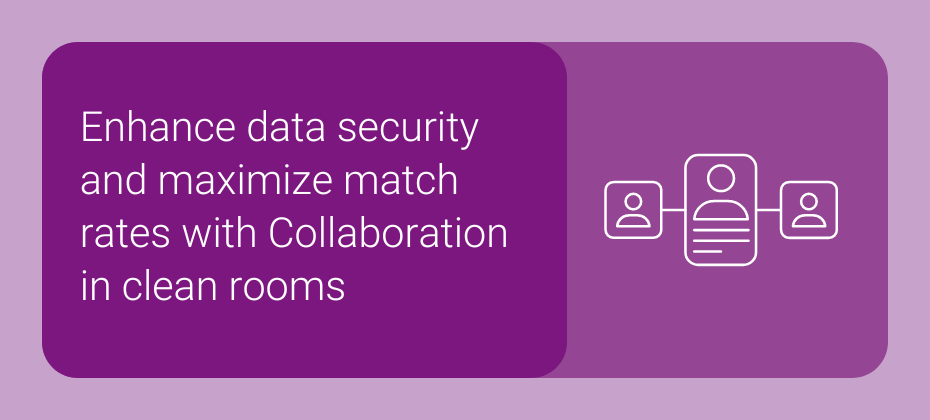At A Glance
Curation is changing how media is bought and sold, moving beyond open auctions and static site lists to more efficient deals. By combining unique data, real-time supply connections, and continuous optimization, curated PMPs reduce waste and improve results. Audigent's, a part of Experian, solutions help marketers achieve measurable outcomes with curated strategies that deliver better targeting, higher engagement, and improved ROI.If you buy media today, you’re already feeling the shift: the best results don’t always come from broad, open auctions or static “safe site” lists; they’re coming from deals that combine the right data with the right inventory and let algorithms optimize in real time. That’s curation. And when it’s done right, it reduces data and media waste for buyers and raises eCPMs (effective cost per thousand impressions) and win rates for publishers.

As part of our Cannes Content Studio series, leaders from Butler/Till, Index Exchange, OpenX, PubMatic, and Yieldmo discuss how curation cuts waste and lifts results.
What is real curation?
Real curation isn’t “packaging inventory.” It’s a strategic framework built on three pillars:
Why it matters: Manual approaches hit a ceiling. They can’t react quickly to shifting content, identity signals, or auction dynamics. That’s where technology partners come in, keeping the optimization loop running continuously.
Intelligence at every touchpoint
Curation isn’t about shifting control between platforms. It’s about better brand decisions, connecting opportunity-rich supply to the brand’s preferred buying platform and enriching each buy with audience data. In practice, supply-side platforms (SSPs) are ingesting richer signals to route inventory more effectively and support frequency caps and deal prioritization, in collaboration with demand-side platforms (DSPs).
“I think we’re seeing a shift toward bringing more DSP capabilities into the SSP, like supply-side targeting and data driven curation. Advancements in areas like CTV are enabling targeting based on content signals, and SSPs are pulling in more data to inform which supply is sent to the DSP, helping with things like frequency caps.”
OpenXMatt Sattel
Why page-level targeting beats static lists
Static domain lists were a useful first step for quality control. The intent was sound, but the approach was too cumbersome for today’s signal-rich buying. Today, AI and contextual engines read the page, not just the site, and adapt in real time.

Page-level logic delivers three key benefits:
- Accuracy by targeting high-intent, page-level content.
- Relevance by matching the creative to both the content and the audience context.
- Speed by enabling campaigns to move away from underperforming pages in real time, without waiting for a manual trafficking change.
“AI-driven contextual engines evaluate the page, not just the domain, to curate inventory in real time. That moves curation from static allowlists to adaptive logic for greater accuracy, relevance, and speed.”
YieldmoSophia Su
Partnerships broaden who influences the buy

Curation works when publishers, agencies, data partners, and platforms share signals and KPIs.
- Horizontal curation (across multiple SSPs) assembles broader, higher-quality reach and resilience, ideal for scale and diversity of supply.
- Vertical curation (an SSP’s in-house product) provides deep controls within a single exchange, useful for specific inventory strategies.
- Creative and data now shape supply and demand: better creative decisioning, tested against richer signals, improves outcomes.
DSPs remain central for activation and pacing. But the sell-side’s growing intelligence means more accurate inventory routing and signal application before a bid ever fires.
“Curation will continue to evolve through deeper data partnerships and expanded use across publishers and agencies, with more sophisticated types of optimization. DSPs will remain critical to activation, even as sell-side decisioning plays a larger role in identifying and shaping the supply to select.”
Index ExchangeMike McNeeley
Curation delivers access and measurable performance

Here’s what curated deals are delivering.
For buyers
| Result | Type of result |
| 36-81% | savings on data segments |
| 10-70% | lower cost per click (CPCs) |
| 1.5-3x | higher click-through rates (CTRs) |
| 10-30% | higher video completion rates |
For publishers
| Result | Type of result |
| 20% | bid density |
| 118% | win rate |
| 10% | revenue on discovered inventory |
| 25% | eCRM on incremental impressions |
Why it works: When data, supply, and optimization are integrated, you reduce waste, surface better impressions, and let algorithms compound your advantage. That’s why curated private marketplaces (PMPs) have grown at ~19% compound annual growth rate (CAGR) since 2019.
“Publishers using supply-side curation see ~15% more diverse buyers and 20–25% better performance than buy-side-only targeting. Smarter packaging and signal application tighten auctions and strengthen outcomes.”
PubmaticHoward Luks
Holistic curation streamlines planning and outcomes

Curation adds the data layer earlier in the buying process, starting at the supply-side. This creates more opportunities to reach the right audience and improves scale and performance. By replacing multiple line items with a single curated deal, campaign setup becomes faster and less error-prone. Curated deals also simplify measurement by including the necessary context for accurate attribution, while dynamic adjustments ensure campaigns remain optimized without requiring manual updates.
“Publishers using supply-side curation see ~15% more diverse buyers and 20–25% better performance than buy-side-only targeting. Smarter packaging and signal application tighten auctions and strengthen outcomes.”
Butler/TillGina Whelehan
It’s much more streamlined, bringing more pieces together so we’re thoughtful and holistic. Adding the audience and data element creates more scale and strategy in how we curate supply and data, and ultimately better results for clients.
The bottom line
Curation has matured from buzzword to performance system. DSPs still anchor activation and pacing, but better sell-side pipes now pre-route inventory and apply signals before any bid starts, making the whole system faster and more accurate. When you combine unique signals, tight supply connections, and always-on optimization, you gain addressability, reduce waste, and achieve better business outcomes for both buyers and sellers.
Curation isn’t just a trend; it’s where programmatic advertising is headed. Start testing curated PMPs today to see the difference for yourself.
Explore curated PMPs with Audigent
FAQs
Curation in performance marketing is the process of combining data, inventory, and optimization to deliver better results. Audigent supports curated strategies through privacy-safe data and advanced integrations.
Curation reduces wasted spend by targeting high-quality impressions and optimizing campaigns in real time. Audigent’s solutions help marketers achieve higher click-through rates, lower costs, and better engagement across channels.
Curated PMPs are deals that use curated data and inventory to deliver measurable results. They help buyers save on data costs, improve ad performance, and achieve better video completion rates, while publishers see higher win rates and revenue.
Audigent provides unique data assets, privacy-safe integrations, and optimization tools that help marketers and publishers create curated deals. Our solutions ensure campaigns are more efficient, targeted, and effective from start to finish.
Horizontal curation combines inventory across multiple platforms for broader reach and diversity, while vertical curation focuses on deep control within a single platform. Both approaches can be tailored to specific campaign goals with Audigent’s expertise.
Latest posts

Have you wondered how the shift toward real-time data is reshaping the way companies connect with consumers? Traditional methods of third-party data collection and demographic targeting are being replaced by more privacy-conscious approaches. In our next Ask the Expert segment, we explore how Experian and Captify’s partnership is harnessing the power of real-time onsite search data to enhance personalized advertising, address identity fragmentation, and provide valuable insights for navigating modern advertising challenges. We’re joined by industry leaders, Amelia Waddington, Chief Product Officer at Captify, and Chris Feo, Experian’s SVP of Sales & Partnerships. In this segment, they discuss the complexities of identity and the innovative use of real-time data in digital advertising. Watch the full Q&A below to learn more about these topics and discover how the collaborative efforts of Experian and Captify are shaping the future of personalized advertising. Understanding the power of real-time marketing data Real-time data provides an up-to-the-minute view of consumer behavior, enabling marketers to make quick, informed decisions. Captify’s use of real-time search data allows for immediate insights, contrasting with traditional third-party data, which often involves delay and prompted answers. This approach allows marketers to see trends and reactions as they unfold, making it possible to tweak campaigns and strategies and always reach the most in-market consumers. By using Captify’s real-time data, we can predict consumer interests and adapt to market changes quickly. Staying ahead of market trends with predictive analytics Captify analyzes more than a billion search signals daily, giving brands a detailed look at changes in audience behavior. These real-time insights help businesses make timely adjustments and reach their audiences in the moments that matter. Beyond digital media, Captify's multi-channel activation strategy extends to platforms such as connected TV and digital out-of-home, ensuring messages remain relevant and effective. How Experian and Captify work together Imagine being able to tailor your ads to consumers' needs and interests in real time. Our partnership with Captify enhances ad targeting and measurement by combining Experian’s vast Digital Graph with Captify’s real-time intent data. "Captify has evolved beyond relying on third-party cookies in isolation and now uses the Experian Graph to provide a more holistic view of identity at both the individual and household levels" says Amelia Waddington, Chief Product Officer at Captify. As privacy concerns grow, we have built and continue to invest in a signal-agnostic Digital Graph that can make connections across a wide range of identifiers, including the Experian Living Unit ID (LUID). The LUID is a unique identifier representing each household in the United States, based on real households and real people. This allows essential demographic information to be enriched to a household, enriching first-party data with detailed consumer insights, like age, gender, historical purchase behavior, and future purchase intent. By continuously adding new data and building fresh audiences and segments, we provide greater insights into the consumer base. Our Digital Graph serves as Captify’s identity spine, allowing them to connect identifiers together at both the person and household levels. This helps their clients target ads more accurately across different channels, making it easier to track and understand consumer behavior across platforms like TV, digital, and radio. Here are five key ways our partnership enhances ad targeting and measurement: Enhancing personalized advertising with real-time insights Identity fragmentation is a challenge for marketers because consumer data is scattered across different devices and platforms, making it difficult to effectively understand and target consumers. Experian and Captify’s partnership provides the fuel to help advertisers by integrating real-time search data with identity graphs, allowing for accurate targeting across various channels. By combining Experian’s robust Digital Graph with Captify’s real-time intent data, advertisers can deliver highly personalized ads on connected TV that retain their relevance and impact, no matter where the consumer engages with the content. "We ingest the Experian Graph as part of our internal Graph, allowing us to connect identifiers together at both person and household levels, which aligns with our expansion into TV, out-of-home, and audio channels."Amelia Waddington, Chief Product Officer, Captify Addressing identity fragmentation A fragmented identity occurs when consumer data is scattered across different devices and platforms, making it difficult to effectively understand and target consumers. Advertisers need holistic media plans instead of fragmented strategies that risk disengaging consumers, while publishers must demonstrate their platforms’ value by targeting seamlessly. By enriching and distributing thousands of demographic and behavioral segments, Experian provides the essential data needed to effectively target diverse audiences. Experian’s Digital Graph complements Captify’s data by connecting various identifiers, providing a complete view of individuals and households. This approach helps advertisers overcome fragmentation challenges, and ensure their messages reach the right audience across multiple touchpoints. Optimizing creative content dynamically Using real-time data, advertisers can adjust creative elements of their ads to better match consumer interests. This means changing parts of an ad, like images or text, based on current audience data, making it more relevant to the consumer. By partnering with Experian, Captify continues to see a rounded view of a consumer, allowing them to provide clients around the globe with data-driven creatives. These creatives achieve better results than standard ones and enable more meaningful connections with consumers. Integrating search data into connected TV Real-time search data plays a crucial role in enhancing the effectiveness of connected TV (CTV) advertising. Captify’s identity solution uses persistent identifiers from the Experian Digital Graph to extract value from onsite search data. Machine learning technology then categorizes these searches to understand consumer intent and create highly relevant audiences. By integrating Captify’s consumer intent data, advertisers can deliver more targeted and relevant ads on CTV platforms. This integration helps marketers reach viewers with content that resonates. Ensuring multi-channel message consistency Consistency in messaging across multiple channels is key for maintaining brand integrity and consumer trust. By using Experian's identity data, Captify ensures that advertisers can deliver cohesive messages across various platforms, including TV, digital, and radio. This integration not only enhances ad targeting precision but also solidifies the brand’s presence, ensuring that every touchpoint reinforces the same core message for a unified brand experience. Watch the full Q&A Visit our Ask the Expert content hub to watch Amelia and Chris’ full conversation. In their discussion, they cover identity beyond identifiers, personalized advertising strategies, and the evolving consumer journey. Amelia and Chris also share about interoperability challenges in CTV and how Captify is using alternative IDs like Unified I.D. 2.0 (UID2). Watch now Contact us About our experts Amelia Waddington, Chief Product Officer, Captify Amelia is Chief Product Officer at Captify, leading the Product, Engineering, Partnerships and Insight teams globally. During her three years at Captify, Amelia has delivered on her product vision to put Captify’s Search Intelligence in the hands of all advertisers—unlocking competitive advantage for clients and partners in a way that’s omnichannel, strategic, open and future-proof. She has launched Captify's Advanced TV, cookieless and data partnerships product lines. Amelia brings over a decade of experience in driving product strategy, underpinned by expertise across data science, machine learning, and analytics. She has a PhD in computational neuroscience and previous roles include product leadership at LiveRamp and Aimia. Chris Feo, SVP, Sales & Partnerships, Experian As SVP of Sales & Partnerships, Chris has over a decade of experience across identity, data, and programmatic. Chris joined Experian during the Tapad acquisition in November 2020. He joined Tapad with less than 10 employees and has been part of the executive team through both the Telenor and Experian acquisitions. He’s an active advisor, board member, and investor within the AdTech ecosystem. Outside of work, he’s a die-hard golfer, frequent traveler, and husband to his wife, two dogs, and two goats! Latest posts

When people shopped in 2023 We also saw notable shifts in how, when, and where people shopped on Black Friday. One significant trend noted in our 2023 Holiday spending report was the increasing preference for early holiday shopping, particularly online. Consumers quickly responded to early discounts and promotions, which caused a surge in spending during October. Cyber Week, encompassing Black Friday through Cyber Monday, also played a significant role, accounting for 8% of total consumer holiday spending. 2023 trends we expect to see in 2024 As you gear up for the holiday season, understanding Black Friday trends from 2023 will be vital, as Black Friday 2024 is expected to see a continuation of several key trends alongside emerging ones: Mobile shopping will continue its growth trajectory. Consumers will keep seeking early deals. Marketers will prepare promotions sooner than ever. Flexible payment arrangements like “buy now/pay later” (BNPL) will drive conversions amid continued inflation. Channel switching will become more common. Paid search will drive the most sales. Let’s talk about what past trends and future predictions mean for your marketing strategy and how you can use them to inform your 2024 holiday campaigns. Emerging consumer behaviors Consumer behaviors and preferences have been changing and reshaping the Black Friday shopping landscape over the last few years. Looking ahead to Black Friday 2024, several trends from last year are likely to continue shaping the shopping experience. Early shopping The early holiday shopping trend will continue to become more pronounced. Many consumers now begin their end-of-year shopping well before Halloween, seeking to take advantage of early deals and discounts, enjoy more time to compare prices and products, avoid crowds, secure popular items early, and spread out their budget. In 2023, Gallup found that one in four holiday shoppers even starts as early as September. This means your business must begin planning sales and promotions earlier in the season and roll them out sooner. The value of experiences We’re seeing an interesting shift toward gifting experiences over physical items among consumers with more disposable income. In a 2023 survey, one in five respondents said they’d prefer to get an experience as a gift over an item. Those in higher income brackets are allocating more of their holiday budgets to experiences that create lasting memories, such as theme park passes, art classes, concert tickets, and so forth. This trend will require retailers to get creative, potentially: Hosting giftable in-store events Enhancing the in-store experience Using experiential marketing to make deeper consumer connections Partnering with other companies to provide bundled gift/experience packages Preference for digital channels Media consumption habits and preferred engagement channels are also undergoing significant changes. Consumers increasingly turn to digital channels like streaming TV and connected TV (CTV) for entertainment and information. CTV ad spending, in particular, is expected to grow by 20% in 2024 and by low double digits into 2027. This shift will influence how retailers reach and engage with consumers, and it underscores the importance of digital marketing strategies and personalized online experiences. Mobile vs. desktop online spending The preference for mobile over desktop for online transactions is growing; in 2023, mobile devices comprised 54% of online sales, with online purchases up 10.4% from 2022 on Black Friday. More and more, consumers are using mobile devices to research, browse, and buy online. Marketers need to optimize their mobile and website experience to make the shopping experience seamless across all devices. Key products and categories Research has shown that the most popular in-store purchases of Black Friday weekend in 2023 included clothing/accessories and electronics. 82% of shoppers bought clothing in-store to inspect colors, material, and fit 73% said they would buy electronics in store to compare quality These categories were followed by: Health and beauty (49%) Household appliances (44%) Sports/leisure (32%) Interestingly, the same categories were also the top sellers online during Cyber Week 2023, with 79% of buyers seeking clothing/accessories and 66% intending to purchase electronics. Amazon was one of the most popular shopping destinations for Cyber Week 2023, with over a billion items sold. Some of the top-selling items included the Amazon Fire TV Stick and Ring Video Doorbell. This indicates a consistent consumer preference across different shopping channels and suggests shoppers are comfortable buying a wide range of products online, even during traditional in-store shopping events. Looking ahead, retailers can reasonably anticipate continued demand for clothing/accessories and electronics, both in-store and online. Marketing strategies that worked Last year was a year of growth, albeit slow growth, despite economic uncertainty. Here are some of the marketing strategies deployed that contributed to this growth. Influencer collaborations Data from a 2023 Black Friday report showed that seven of every 10 shoppers acknowledged an influencer’s role in their purchase decision. Partnering with influencers to promote Black Friday deals and hosting live streaming sessions with influencers showcasing products helped reach new audiences and build credibility. Influencers' recommendations resonated strongly with their followers, which drove traffic and increased sales. Cross-channel marketing campaigns Black Friday gives marketers a unique opportunity to engage audiences across touchpoints. Using a mix of channels, such as social media, email, websites, SMS, in-store promotions, and print media, tends to create more impactful campaigns. Last year proved to be diverse in terms of marketing channel mix. Marketers embraced a cross-channel approach to connect with their users during holiday sales, which was evident in the increased usage of channels like email, SMS/MMS, web push notifications, and emerging channels like Roku messages. Using multiple channels to promote Black Friday deals increased visibility and reached a wider audience. This comprehensive approach ensured marketing messages reached customers wherever they were. To maximize sales during the Cyber Five holiday season, activate Experian audiences as part of your omnichannel campaign. Our offerings include meticulously curated behavioral segments based on discount indicators such as Black Friday, Cyber Monday, and Coupons/Sales. These segments help you target shoppers who are ready to take advantage of your promotions and are primed for early conversion. Our marketing data was ranked #1 in accuracy by Truthset, which means you can power smarter marketing initiatives, like insights, targeting, and measurement, using the highest-rated data. App-only deals In 2023, mobile app sales increased by 2% from 2022, generating a 12% increase in app purchases and $2 billion more in revenue than the year before. Businesses offering exclusive deals through their mobile apps incentivized customers to download and use the app for their purchases, which helped boost sales through a dedicated channel. Limited-time offers Time-limited offers are the essence of Black Friday and Cyber Week, giving shoppers a timeframe for getting the lowest prices of the year on certain products. Creating urgency is a highly effective way to get people to make a faster purchase decision. Bath & Body Works is exemplary at using limited-time offers; once a year around Black Friday, they run a “Buy 3, Get 3” sale on the whole store for a single day, which encourages customers to stock up while getting their holiday shopping done. Flash sales and hourly deals are shorter limited-time promotions that generate excitement, traffic, and sales. By highlighting specific products with steep discounts, retailers encourage customers to make instantaneous purchases. Amazon is known for these, which they refer to as Lightning Deals or product discounts available for only a few hours. Early-bird discounts and exclusive previews Retailers wanting to avoid overcrowded stores or website crashes can reward those who shop early with exclusive discounts or sneak peeks into Black Friday deals. This creates a feeling of urgency and privilege that leads to a purchase. Best Buy offers its Best Buy Plus and Best Buy Total members exclusive savings during a sale period just for them. They get early access to discounts toward the end of October, after which they open up their early bird deals to the public. Predictions for Black Friday 2024 Based on what we’ve seen in 2023, we expect the following trends to shape consumer behavior on Black Friday and beyond in 2024. Consumers will use their phones to shop more often than they already do Mobile shopping is easy and discreet, allowing customers to shop from anywhere while staying on top of sales. Black Friday mobile orders increased from 2022 to 2023, with over 50% of all Black Friday sales occurring on smartphones. This indicates a growing trust in smartphone transactions among shoppers, which is why 2024 will likely reflect this trend. As a marketer, this means you should ensure your website is optimized for smartphones and tablets. Ensure load speed is quick, navigation is simple, designs are intuitive, and mobile payment options are available. You also have an opportunity to invite your customers to sign up for SMS or push notifications so they can shop deals immediately after they’re rolled out. While mobile should be a priority, we still recommend investing in multiple channels to capture online shoppers everywhere they’re buying. Our Graph can help you unify data, capture user activity, and view your target audience holistically to optimize ad spend, allocate resources effectively, and improve ROI. Marketers will start preparing their Black Friday campaigns earlier than ever With increasing market competition and pressure to accommodate early bird deal seekers, marketers will likely start preparing their discounts, inventories, and promotional materials earlier in the summer. Data enrichment can help you prepare early Black Friday promos by providing deeper insights into your customers and what they want. Enriching your existing data with behavioral, financial, and demographic information can help you create precise audience segments and personalized content, anticipate customer preferences, optimize channel placement, and tailor your promotions effectively. On average, Experian has 250 behavioral and demographic marketing attributes per individual, which means we can decorate households and people with marketing data to get a full customer profile and fill in any gaps you have on your audience. You can also consider implementing sell-side targeting to help your promotions reach the right people. If you plan to run early promotions, try not to create deal fatigue among your consumers. Focus on building a few high-quality promotions that will attract your target customers. BNPL arrangements will become more common for conversion Given lingering inflation in the U.S., consumers will still be looking for ways to stretch their money this year, and many shoppers may seek out BNPL arrangements. With so many shoppers wanting the financial convenience of making large purchases without the immediate financial burden, marketers can use data enrichment to identify their target segments most likely to use BNPL and create personalized offers and promotions for them. Your strategy should include high-value offers and messaging that appeal to budget-conscious shoppers and a checkout optimized for BNPL options. Channel switching will surge Black Friday and Cyber Monday sales are starting to become channel-agnostic, with consumers browsing online, on mobile apps, in physical stores, and on social media. As such, they expect a unified experience wherever they browse. Any inconsistency can disrupt the purchase journey and deter potential buyers. As the shopping experience becomes more connected, consumers are moving between channels more frequently, which means integrating data from various touchpoints will be crucial to understanding and predicting customer behavior. Marketers must develop cohesive omnichannel strategies with consistent messaging and promotions across channels. Your campaigns should span multiple channels so customers can engage with your brand in various ways. We work with major platforms, marketers, and agencies, which means we have existing partnerships across the ecosystem for you to connect with and bring your consumer data to life to meet your needs. Paid search will drive the most sales Research from Adobe shows paid search as the top sales driver of Cyber Week 2023, comprising nearly 30% of all online sales. Due to the high-intent customers captured by paid search and the surge in shopping on mobile devices, we expect to see paid search drive much of the Black Friday sales in 2024 — especially as advances in data analytics and AI allow marketers to optimize paid search campaigns more effectively. They can analyze vast amounts of data to refine keywords, ad copy, and bidding strategies for higher ROI and better targeting. In 2024, it's essential to prioritize paid search strategies and focus on using relevant, high-performing keywords for your campaigns. You can continuously refine your strategies using AI and data analytics to target high-intent customers. Additionally, integrating insights from customer behavior data will help you create more personalized, impactful ad copy and heighten the effectiveness of your paid search efforts. Experian can help you win Black Friday 2024 Want your marketing campaigns to stand out and reach your audiences on Black Friday this year? Partner with Experian to create data-driven, targeted, impactful 2024 holiday campaigns. Download our 2024 report here Download our 2025 report with GroundTruth here Our data empowers you to gain valuable insights and optimize your holiday marketing strategies. We can connect online and physical transactions to our Experian household ID for a holistic view of customer behavior, connect ad exposure with foot traffic, or employ control group lift analysis to measure campaign effectiveness. By activating our purchase-based holiday audiences, like last-minute and one-stop holiday shoppers, you can reach the segments most likely to spend with you. Integrating with over 150 channels, we’ll help your campaigns reach your audience wherever they are. You can even utilize our connections to various digital platforms and partners to expand your reach. With Experian’s measurement offerings, you can make data-driven decisions about your activation strategies. Engage the right audiences and drive exceptional results this holiday season with Experian. Get started Latest posts

At Experian, we power data-driven advertising through connectivity. Today, we're excited to introduce our newest offering, which helps drive that connectivity: Experian's Collaboration in clean rooms. This offering is now generally available in InfoSum, AWS Clean Rooms, and others. Experian can now facilitate successful data collaboration across multiple secure environments, such as at Experian, through crosswalks, and now in clean rooms. Whether you are a marketer or partner, introducing Experian’s signal-agnostic offline and digital identity graphs into your clean rooms lets you run identity resolution directly in the clean room. This means your data remains secure, while you and your partner experience higher match rates and you maximize your clean room investment, leading to: More resolved data More valuable insights and smarter activation More accurate and complete measurement A leap forward in data collaboration Backed by Experian’s Global Data Principles, Experian's deep roots in identity and data security offer the most effective and trusted ways to match data and protect consumer privacy. Our signal-agnostic approach means we can resolve all types of offline and digital identity signals, which is valuable now and will become even more valuable as third-party cookies go away. Additionally, data hygiene is built right into our collaboration offering, helping to improve match rates. The benefits of working with Experian’s rich identity data in a clean room environment are obvious so it is no surprise to see that 55% of data clean room users are using identity solutions in data clean rooms. What are data clean rooms? Data clean rooms are a tool typically used for data sharing, built on top of cloud providers such as AWS clean rooms. They protect data privacy while facilitating data collaboration among clients, marketers, businesses, and their partners. As the industry places greater emphasis on data security, clean rooms have emerged as secure environments that allow companies to: Enhance user privacy protection Minimize the impact of cookie deprecation Secure collaboration with data partners The industry has quickly realized that, for what clean rooms offer by way of privacy and security, they lack resolution capabilities, typically yielding subpar match rates. Benefits of Experian's Collaboration in clean rooms offering Built upon Experian’s rich offline and digital identity foundation, with support for various identifiers across platforms, Collaboration in clean rooms helps clients maximize the value of their data and meet the diverse needs of modern business. Through Experian's Collaboration in clean rooms offering, you can: Collaborate with partners for richer data insights Achieve higher match rates Improve audience building Produce more accurate and complete reports Ensure data privacy Regardless of the identifier type you are looking to collaborate on, Experian has the identity data to support you and your partner. This leads to higher match rates and more resolved data for you to use to benefit your media initiatives. Get started with Collaboration in clean rooms today Get the most out of your first-party data with Collaboration in clean rooms, which is essential for businesses that want to compete in a fast-paced market and connect with consumers in today’s data-driven world. We understand the importance of data collaboration and make seamless, secure data sharing possible between partners. Connect with us today to find out how Experian's Collaboration in clean rooms offering ensures privacy while allowing you to extract valuable data insights for smarter data-driven advertising. Start collaborating Latest posts


